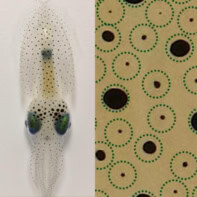Biophysicist Jianwu Dai from the Institute of Genetics and Developmental Biology at the Chinese Academy of Sciences tells Ling Xin about moving from biophysics to cell biology and how his lab is recovering from the coronavirus pandemic

What attracted you to study physics?
When I was in high school I loved physics and hoped to study theoretical physics in college. However, I didn’t do very well in the national college entrance examination and ended up choosing cell biology. I became very interested in the physical aspects of living cells and did a Master’s in biophysics at what is now Peking University Health Science Center. I learned to use various biophysics instruments and techniques to study cytoskeletons and cell membranes. I also started to realize that biophysical signals could be as important as biochemical signals in understanding cells, tissues and organs.
How did physics help your PhD in cell biology?
I did my PhD with Michael Sheetz at Duke University Medical Center in the US. This involved using laser optical tweezers to precisely measure the tension of cell membranes. We did this by putting a latex bead on the cell’s surface and then removed the bead to pull out a membrane tube – which is very elastic – from the cell. We then measured the force needed to pull the tube and calculated the cell membrane tension. It was the first time that laser tweezers were used to study living cells and the work involved a lot of physics.
On the one hand, the potential market for academic publishing in China is huge. On the other, there still needs to be an improvement in the quantity and quality of our publications.
What do you currently work on?
My current research focuses on tissue and organ regeneration, especially through the design of collagen scaffolds. Our lab recently completed a clinical trial with about 400 patients for a “smart bone formation” product and now we’re waiting for official clearance from the National Medical Products Administration. We also did a clinical study on intrauterine tissue regeneration with about 100 patients who had Asherman’s syndrome – a rare condition in which scar tissue forms in the uterus. More than 60 healthy babies have been born as a result of that project.
What are some of the key research topics carried out at the Institute of Genetics and Developmental Biology?
A significant part of the institute’s research efforts are dedicated to agriculture-based molecular breeding. My colleagues use genome sequencing and other modern biotechnologies to cultivate products such as rice, wheat and corn with high-quality yields and better resistance to disease. Our institute has also partnered with local governments to set up several breeding centers across the country.
What are some of the main issues facing researchers at your institute?
One issue is that about 10% of our research groups face funding shortage, in particular those that are not directly engaged in the institute’s major research projects. Another is that my colleagues and I don’t have enough graduate students or postdocs to work with. The quota cap on student admission in China has favoured universities over research institutes. For instance, I can only take on one doctoral student each year. This has become a bottleneck problem for the institute. The mechanism for industrial translation also needs to be improved.
How has COVID-19 affected your lab and are you now starting to reopen?
There certainly have been interruptions. My lab was closed for a couple of months during the worst of the pandemic. Some students are now back in the lab, especially those who are about to graduate. We’ve recovered about 60–70% of our research productivity. But we still can’t get all the lab supplies we need because the suppliers are manufacturing at a reduced capacity. I believe the impacts of COVID-19 in our field are temporary rather than long term. Students might face delays, but they shouldn’t have problems finding a job or further training opportunities as they move ahead.
You recently became the editor-in-chief of Biomedical Materials (BMM). Why did you decide to take on this role?
I’ve worked on biomedical materials for two decades and I’m aware of the importance of high-quality publications for our field. Early on, I was thinking of starting my own journal, but that could be a time-consuming process. So, when IOP Publishing, which publishes Physics World, contacted me about the BMM appointment, I immediately realized it’s a great opportunity and accepted.
What are the strengths and challenges of the journal?
This year is the 15th anniversary of BMM and the editorial board has worked hard to process manuscripts in an efficient manner. However, the journal faces increasing challenges from both the rapidly evolving discipline itself and from rival journals. We plan to distinguish BMM from similar publications by highlighting special topics such as the study of physical and mechanical mechanisms of biomedical materials in tissue regeneration. We will also expand the journal’s scope to include the latest advances in industry. The Physics World China Briefing is now out
How are you going to make it more appealing to researchers in the field, especially those from China?
China has an expanding biomedical materials research community. To attract more authors and readers from China, we’re working on assembling a team to promote BMM through Chinese social-media performs and via online talks.
How do you see academic publishing in China?
On the one hand, the potential market for academic publishing in China is huge. On the other, there still needs to be an improvement in the quantity and quality of our publications. While research papers are essential, review articles, outreach and educational content are equally important in the world of academic publishing. For example, reviews play a major role in interpreting and synthesizing new research findings for a broader audience and they are particularly helpful for graduate students and postdocs who are interested in the overall development of their field.



